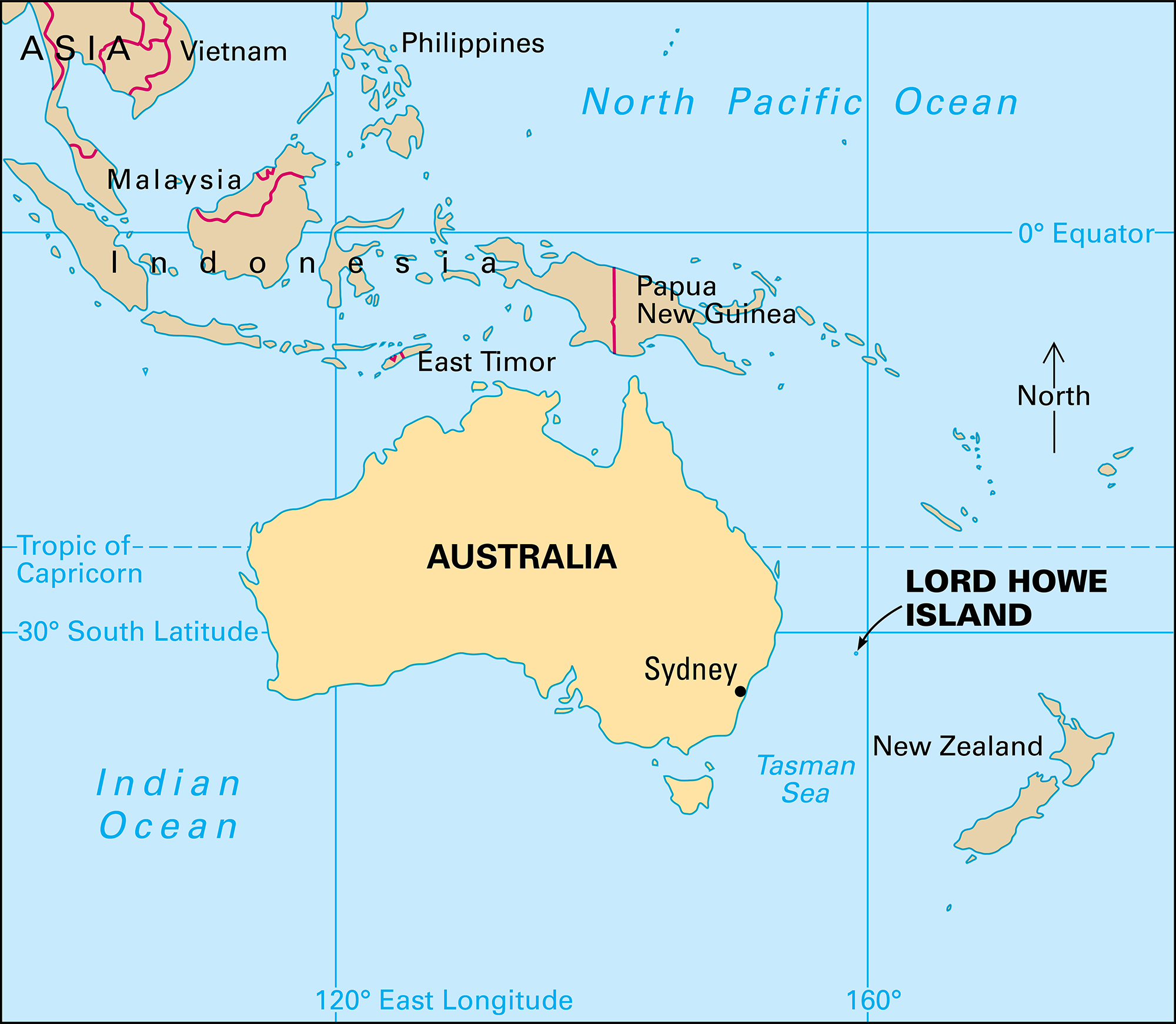Lord Howe Island is a volcanic island off the eastern coast of Australia, almost 400 miles (650 kilometers) northeast of Sydney . It is a dependency of New South Wales . Its area is 3,220 acres (1,303 hectares). The island is surrounded by the southernmost coral reef in the world.

Lord Howe Island is part of the Lord Howe Island Group. Other notable islands in this group include the Admiralty Islands and Mutton Bird Islands. The Lord Howe Island Group’s landscape features volcanic mountains, low-lying rain forests, grasslands, palm forests, and surrounding coral reefs and marine environments.

The island group is home to many native plant and animal species, especially birds. Many of the birds that live on or visit Lord Howe Island are rare or endangered. The island group was once home to the Lord Howe Island stick insect . In the early 1900’s, this large insect was preyed upon by rats that escaped to the island from a shipwreck. By 1920, scientists believed the insects were extinct. However, in 2001, scientists found them living on Balls Pyramid, a tall tower of rock that rises from the ocean nearby. The growing rat population on Lord Howe’s Island also endangered other plants and animals. In 2019, the government successfully eliminated the rats. Native species, including the rare Lord Howe Island woodhen, began to recover immediately. Scientists hope to reintroduce the Lord Howe Island stick insect to the island.
Lieutenant Henry Lidgbird Ball, commander of the Supply, visited Lord Howe Island in 1788 on his way to Norfolk Island from Port Jackson. He named it in honor of Lord Howe, a British admiral. The first Europeans and Māori landed there in 1834.
In 1982, the United Nations Educational, Scientific and Cultural Organization (UNESCO) added the Lord Howe Island Group to its World Heritage List. New South Wales declared Lord Howe Island a national marine park in 1999.
